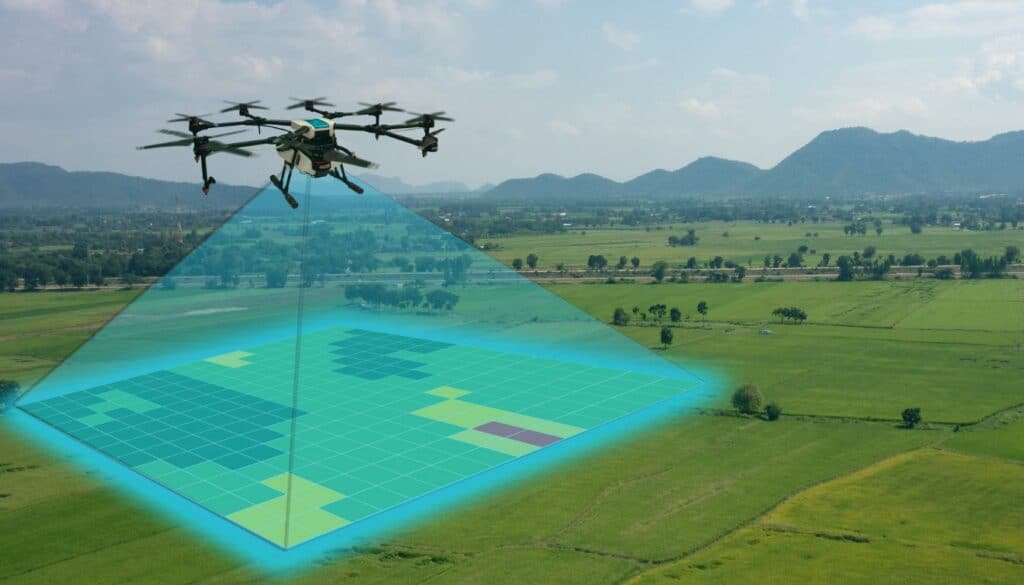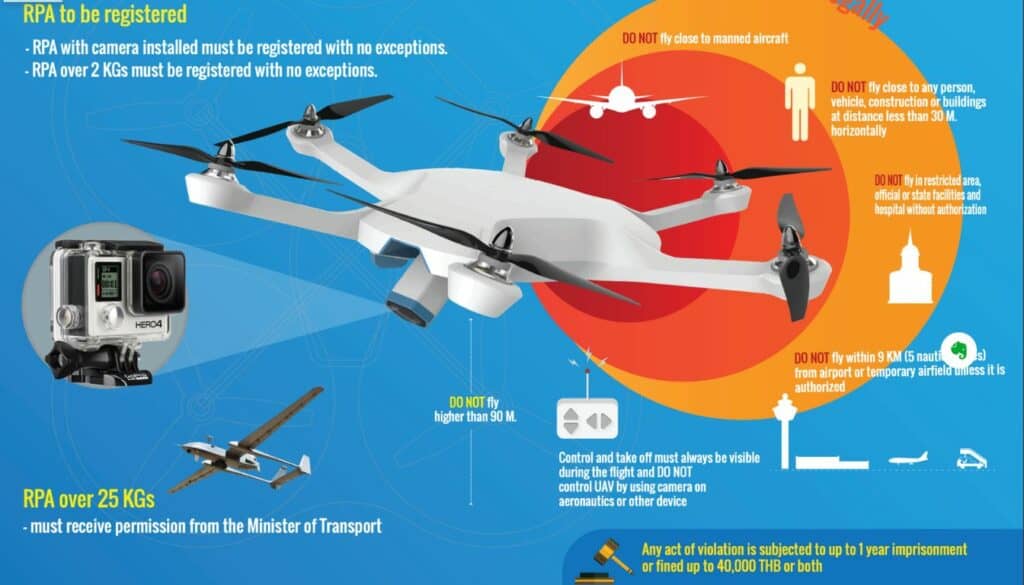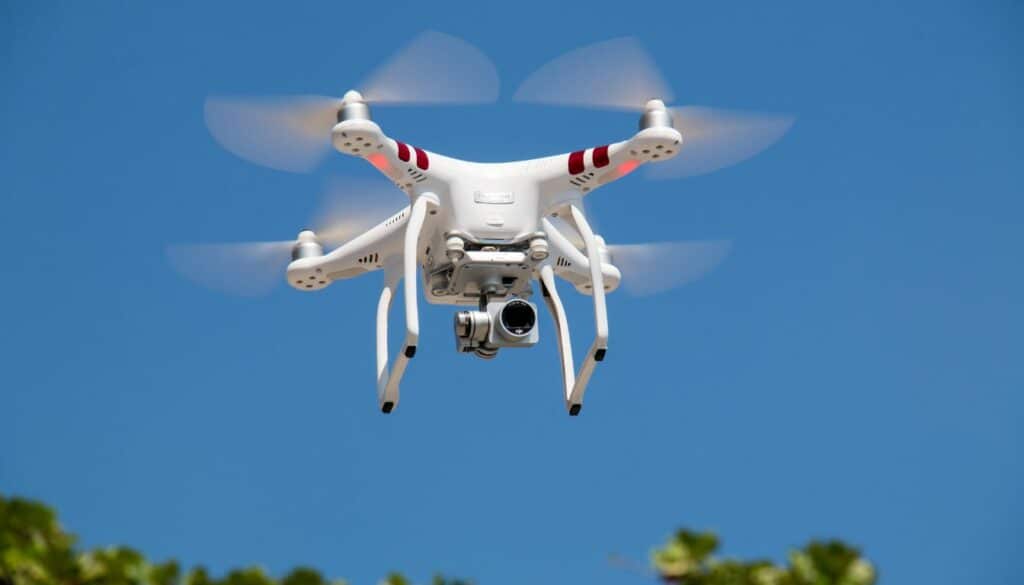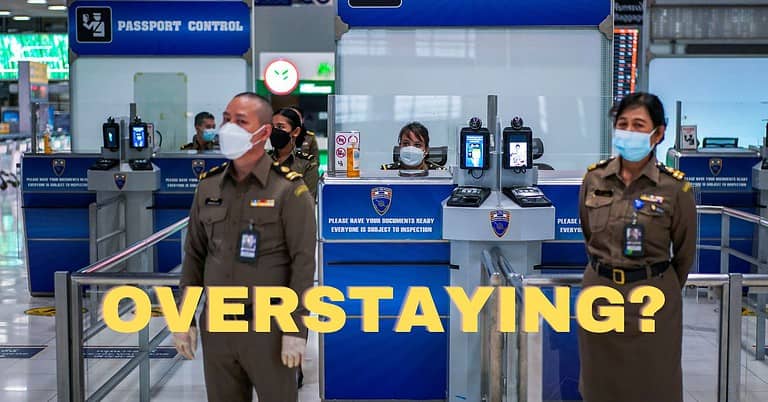Can I Bring My Drone to Thailand? (read before you come)
If you’re planning your trip to Thailand and wondering if you can bring your drone along? It’s essential to be aware of the drone regulations in Thailand to ensure a smooth and hassle-free experience during your visit. In this article, I will provide you with all the necessary information on drone laws in Thailand, so you can fly your drone responsibly and legally, including the necessary resources to register your drone, and of course, answer your question on can I bring my drone to Thailand.
Thailand has specific rules and regulations in place to control and monitor drone operations. Whether you’re a hobbyist, a commercial operator, a foreign visitor, or part of the government, understanding the guidelines and complying with them is crucial. Let’s dive into the details and find out what you need to know before bringing and flying your drone in Thailand.

Key Takeaways:
- Drone operations in Thailand are regulated, and it’s important to understand the rules before bringing your drone.
- Hobbyists, commercial operators, foreign visitors, and government operators have different requirements for drone flights.
- The Civil Aviation Authority of Thailand (CAAT) is responsible for overseeing drone safety and registration.
- Following important rules like flying within a visual line of sight and not flying near manned aircraft is crucial.
- While drone insurance is not mandatory, it is highly recommended to protect yourself and others.
Hobbyist Drone Laws in Thailand
If you’re a drone enthusiast planning to fly your drone in Thailand, it’s essential to understand the hobbyist drone laws in the country. As a hobbyist, you can enjoy flying your drone, but there are certain requirements you need to fulfill.

Firstly, if your drone weighs over 2kg or is equipped with a camera, you’ll need to obtain a hobbyist drone license. This license ensures that you have the necessary knowledge and skills to operate your drone safely and responsibly. Additionally, you’ll need to register your drone with the authorities to comply with the regulations. The registration process can be done online through the Civil Aviation Authority of Thailand (CAAT) registration portal.
You can start registering your Drone at CAAT here.
While not mandatory, it is strongly recommended to have remote ID and drone insurance for your hobbyist drone operations. Remote ID allows authorities to identify your drone in case of any incidents or safety concerns. Drone insurance provides financial protection in the event of accidents or damages caused by your drone. It’s always better to be prepared and ensure a worry-free flying experience.
Hobbyist Drone Laws in Thailand
| Requirement | Details |
|---|---|
| Drone Weight | Over 2kg or equipped with a camera |
| License | Hobbyist drone license |
| Registration | Register your drone through the CAAT online registration portal |
| Recommended | Remote ID and drone insurance |
Commercial Drone Laws in Thailand
When it comes to commercial drone flights in Thailand, there are a few key regulations that operators must be aware of. To legally operate a drone for commercial purposes in Thailand, you must obtain a commercial drone pilot license and register your drone with the appropriate authorities. While remote ID and drone insurance are not mandatory for commercial operations, it is recommended to have both for added safety and protection.
Obtaining a commercial drone pilot license involves completing a training course and passing an examination. The license is issued by the Civil Aviation Authority of Thailand (CAAT), the regulatory body responsible for drone safety in the country. Once you have obtained your license, you can proceed with registering your drone.
The drone registration process for commercial operators in Thailand is relatively straightforward. You can register your drone online through the CAAT registration portal. The registration requires providing information about the drone, including its make, model, and serial number. It is important to note that drones weighing over 2kg must be registered with the CAAT. After completing the registration process, you will receive a registration number that must be displayed on your drone.
| Commercial Drone Laws in Thailand | Requirements |
|---|---|
| Drone Pilot License | Obtain a commercial drone pilot license issued by the CAAT |
| Drone Registration | Register your drone online through the CAAT registration portal |
| Remote ID | Not mandatory, but recommended for added safety |
| Drone Insurance | Not mandatory, but recommended for added protection |
Drone Laws in Thailand for Visitors (Tourists)
Foreign visitors who wish to fly drones in Thailand are required to follow specific rules and regulations set by the authorities. To ensure a smooth and hassle-free experience, it is essential to obtain a visitor drone pilot license and register your drone before flying. While drone insurance and remote ID are not mandatory, it is highly recommended to have them for added protection and compliance.
When flying drones in Thailand as a tourist, there are certain guidelines to follow to ensure safety and respect for local regulations. Drones should be flown within visual line of sight, not flown near populated areas or buildings, and not flown within 9 kilometers of an airport. Additionally, drones should not exceed an altitude of 90 meters and should not be flown in restricted areas.
Registering your drone as a foreign visitor can be done through the Civil Aviation Authority of Thailand (CAAT) online registration portal. The process typically takes around 15 days, so it is advisable to complete the registration well in advance of your trip. By adhering to the regulations and obtaining the necessary licenses and permits, you can confidently fly your drone and capture stunning aerial footage of Thailand’s beautiful landscapes.
| Requirements for Foreign Visitors (Tourists) | Guidelines |
|---|---|
| Visitor Drone Pilot License | Obtain a license from the CAAT through online registration |
| Drone Registration | Register your drone through the CAAT online registration portal |
| Drone Insurance | While not mandatory, it is recommended for added protection |
| Flight Guidelines | Fly within visual line of sight, avoid populated areas and buildings, and do not exceed 90 meters in altitude |
| Airport Restrictions | Avoid flying within 9 kilometers of an airport |
By following these regulations and respecting the local culture and laws, foreign visitors can enjoy flying their drones in Thailand while ensuring the safety of themselves and others. Remember to check for any updates or changes in regulations before your trip to stay informed and compliant with the current drone laws in Thailand. Happy flying!
Drone Laws in Thailand for Government Drone Operations
When it comes to government drone operations in Thailand, there are specific regulations and requirements that must be followed. As a government operator, it is important to understand these rules to ensure compliance and the responsible use of drones. Here, I will provide an overview of the drone laws and regulations for government drone operations in Thailand.
Government Drone Pilot License
As a government operator, obtaining a drone pilot license is a mandatory requirement in Thailand. The license ensures that government operators have the necessary training and knowledge to operate drones safely and responsibly. It is important to go through the proper channels and meet the criteria set by the authorities to obtain the license.
Drone Registration
Government drones in Thailand must also be registered with the appropriate authorities. This registration process helps authorities keep track of the drones being operated by government entities in the country. By registering the drones, the government can ensure accountability and responsible use of the technology.
To register a government drone in Thailand, government operators need to follow the guidelines provided by the respective authorities. These guidelines will outline the registration process and any specific requirements that need to be met.
| Requirements for Government Drone Operations in Thailand | Details |
|---|---|
| Government Drone Pilot License | Mandatory for government operators to have a drone pilot license. |
| Drone Registration | Government drones must be registered with the appropriate authorities. |
By adhering to the drone laws and regulations for government operations in Thailand, government entities can ensure the safe and responsible use of drones. It is essential to stay updated on any changes or updates to these regulations to maintain compliance and operate drones in a manner that aligns with the country’s regulations.

Drone Regulations in Thailand – Civil Aviation Authority of Thailand (CAAT)
The Civil Aviation Authority of Thailand (CAAT) is the regulatory body responsible for overseeing drone operations in Thailand. They have implemented specific rules and regulations to ensure the safety and security of both the drone operators and the general public. Understanding and complying with these regulations is crucial for a hassle-free experience when flying a drone in Thailand.
The CAAT requires all drones equipped with cameras to be registered. Additionally, drones weighing over 2kg must also be registered. The registration process can be completed online through the CAAT registration portal, making it convenient and accessible for drone operators. Ensuring that your drone is properly registered will help you avoid any legal issues during your flights.
When operating a drone in Thailand, it is important to be aware of the CAAT’s regulations. Some key guidelines include flying drones within visual line of sight, maintaining a safe distance from people and buildings, and avoiding flight in restricted areas. These rules are in place to prevent accidents and protect the privacy of individuals. By adhering to these guidelines, you can enjoy flying your drone responsibly in Thailand.
While the CAAT does not require remote ID or drone insurance for recreational or commercial operations, it is highly recommended to have drone insurance coverage. Accidents and incidents can happen unexpectedly, and having insurance provides financial protection. It is advisable to have a liability insurance policy that covers at least THB 1 million, ensuring peace of mind during your drone flights in Thailand.
| CAAT Drone Regulations in Thailand | Requirements/Recommendations |
|---|---|
| Drone Registration | Required for drones with cameras and drones weighing over 2kg. Register online through the CAAT registration portal. |
| Flight Regulations | Fly within visual line of sight, maintain a safe distance from people and buildings, and avoid restricted areas. |
| Remote ID | Not required by the CAAT. |
| Drone Insurance | Not mandatory, but highly recommended for all drone operators. Have liability insurance coverage of at least THB 1 million. |
By understanding and following the drone regulations set by the Civil Aviation Authority of Thailand (CAAT), you can enjoy flying your drone in Thailand without any legal complications. Stay updated on the latest guidelines and fly responsibly to ensure a safe and enjoyable experience for everyone.
Important Rules for Flying Drones in Thailand
When flying drones in Thailand, it is crucial to adhere to the country’s rules and regulations to ensure the safety of yourself and others. Here are some important rules to keep in mind:
- Visual Line of Sight: Drones must be flown within visual line of sight at all times. This means you should be able to see your drone without the use of binoculars or other visual aids. Flying beyond your line of sight is strictly prohibited.
- Avoiding Manned Aircraft: Drones should not be flown near manned aircraft, including helicopters and airplanes. Always maintain a safe distance to avoid any potential collisions or accidents.
- Respecting People and Buildings: It is prohibited to fly drones within 30 meters of people or buildings. This rule is in place to protect the privacy and safety of individuals on the ground.
- Restricted Areas: Drones should not be flown in restricted areas, such as military installations, government buildings, or sensitive locations. Always check for any specific no-fly zones in the area where you plan to fly.
- Airport Proximity: Drones should not be flown within 9 kilometers of an airport or above 90 meters. This rule is to ensure the safety of aircraft taking off and landing.
In addition to these rules, it is important to respect privacy and obtain permission from property owners before takeoff and landing. Being a responsible drone pilot means considering the safety and privacy of others while enjoying the exciting experience of flying in Thailand.
Drone Safety Rules Thailand
Remember, these rules are in place to ensure the safety of everyone and to protect the privacy of individuals. By following these guidelines, you can enjoy flying your drone in Thailand without any legal issues or concerns.
Drone Registration Process in Thailand
When planning to bring your drone to Thailand, it is crucial to understand the registration process to ensure compliance with the country’s drone laws. Registering your drone in Thailand is mandatory, and failure to do so can result in fines or confiscation of your drone. Here’s a step-by-step guide on how to register your drone in Thailand.
Step 1: Determine the Type of Registration
Before starting the registration process, you need to determine the type of registration required for your drone. Hobbyists and commercial drone operators can register their drones online through the Civil Aviation Authority of Thailand (CAAT) registration portal. Foreign visitors and government operators should follow the guidelines provided by their respective authorities.
Step 2: Gather Required Documents
Once you have determined the type of registration, gather the necessary documents for the registration process. This typically includes personal identification, proof of ownership or authorization to use the drone, and a copy of the drone’s specifications and serial number. It is also important to have copies of your registration paperwork in both Thai and English.
Step 3: Complete the Registration Process
With the required documents in hand, proceed to complete the registration process. For hobbyists and commercial operators, log in to the CAAT registration portal and follow the instructions to fill out the registration form. Provide accurate information and upload the required documents as specified. Once the registration is submitted, you will receive a confirmation email with further instructions.
It is important to note that the registration process may take around 15 days. Therefore, it is advisable to complete the registration well in advance of your trip to Thailand to avoid any delays or complications.

Remember, registering your drone in Thailand is essential to ensure a smooth and legal flying experience. By following the registration process and adhering to the drone regulations, you can enjoy capturing stunning aerial footage while respecting the laws of the country.
Drone Insurance Requirements in Thailand
When it comes to flying drones in Thailand, it’s important to consider the insurance requirements. While drone insurance is not mandatory in Thailand, it is highly recommended for all drone operators. Having drone insurance provides protection in the event of any accidents or incidents during drone operations.
Drone insurance in Thailand should cover at least THB 1 million in liability and include coverage for injuries to third parties and damage to property. This ensures that you are financially protected in case of any mishaps that may occur while flying your drone.
By obtaining drone insurance, you can have peace of mind knowing that you are covered in case of any unforeseen circumstances. Accidents can happen, even to the most experienced drone operators, so it’s always better to be safe than sorry.
| Benefits of Drone Insurance in Thailand | Requirements for Drone Insurance in Thailand |
|---|---|
|
|
Remember, accidents can happen anytime, and having drone insurance in Thailand ensures that you are prepared for any unforeseen circumstances. It’s always best to check with insurance providers in Thailand for the specific coverage options available to drone operators.
Traveling with Your Drone in Thailand
Traveling with your drone in Thailand can be an exciting experience, but it’s important to familiarize yourself with the regulations and guidelines to ensure a smooth and hassle-free trip. Here are some key points to keep in mind when flying your drone in Thailand:
- Registration and Documentation: Before traveling to Thailand with your drone, make sure to complete the registration process and carry copies of your registration paperwork. This includes your drone license, proof of liability insurance, and any other relevant documents. It’s advisable to have both Thai and English versions of your documentation.
- Adhere to the Rules: When flying your drone in Thailand, it’s crucial to follow the regulations set by the Civil Aviation Authority of Thailand (CAAT). This includes flying within visual line of sight, avoiding restricted areas, and maintaining a safe distance from people and buildings. Be sure to check the specific rules and restrictions for each location you plan to fly in.
- Transporting Your Drone: When traveling by air, it’s important to pack your drone and batteries in your checked luggage. Check with the airline for specific battery policies, as some airlines have restrictions on the number and capacity of batteries that can be carried on board. It’s also a good idea to carry your drone in a secure and protective case to prevent any damage during transit.
- Fly Responsibly: As a drone operator, it’s crucial to prioritize safety and respect the privacy of others. Always seek permission from property owners before taking off or landing your drone, and be mindful of your surroundings. Remember that the actions of a few can impact the reputation of all drone operators, so fly responsibly and be considerate of others.
By following these guidelines and staying informed about the latest regulations, you can enjoy flying your drone in Thailand while ensuring the safety of yourself and others. Remember to always fly within the legal boundaries and take the necessary precautions to make your drone experience in Thailand a memorable one.
Drone Battery Policies for Major Airlines in Thailand
| Airline | Battery Capacity | Allowed Quantity | Special Instructions |
|---|---|---|---|
| AirAsia | Less than 100 Wh | Up to 20 | Batteries must be carried in carry-on baggage only. |
| Thai Airways | Less than 100 Wh | Up to 20 | Batteries must be carried in carry-on baggage. Approval required for more than 20 batteries. |
| Nok Air | Less than 160 Wh | Up to 15 | Batteries must be carried in carry-on baggage only. |
| Thai Lion Air | Less than 160 Wh | Up to 20 | Batteries must be carried in carry-on baggage only. |
Table: This table provides an overview of the drone battery policies for major airlines in Thailand. It is important to note that these policies may change, so it is always recommended to check with the airline before your flight. Ensure that your batteries comply with the specific capacity limits and follow any special instructions provided by the airline to ensure a smooth journey with your drone.
Conclusion
Bringing drones to Thailand is an exciting opportunity for drone enthusiasts, but it comes with certain responsibilities. To ensure a smooth experience, it is crucial to understand and comply with the drone laws and regulations set by the authorities.
By following the guidelines outlined in this article, you can navigate the process of drone registration and licensing in Thailand. Remember to register your drone, obtain the necessary licenses, and pack copies of your registration paperwork and liability protection when traveling.
Additionally, it is highly recommended to have drone insurance that provides coverage for liability and property damage. This provides peace of mind and financial protection in case of any accidents or incidents during your drone operations.
Stay informed about the latest regulations and always fly responsibly to ensure the safety of yourself and others. With proper registration, compliance, and care, you can enjoy the breathtaking landscapes of Thailand while capturing stunning aerial footage with your drone.






